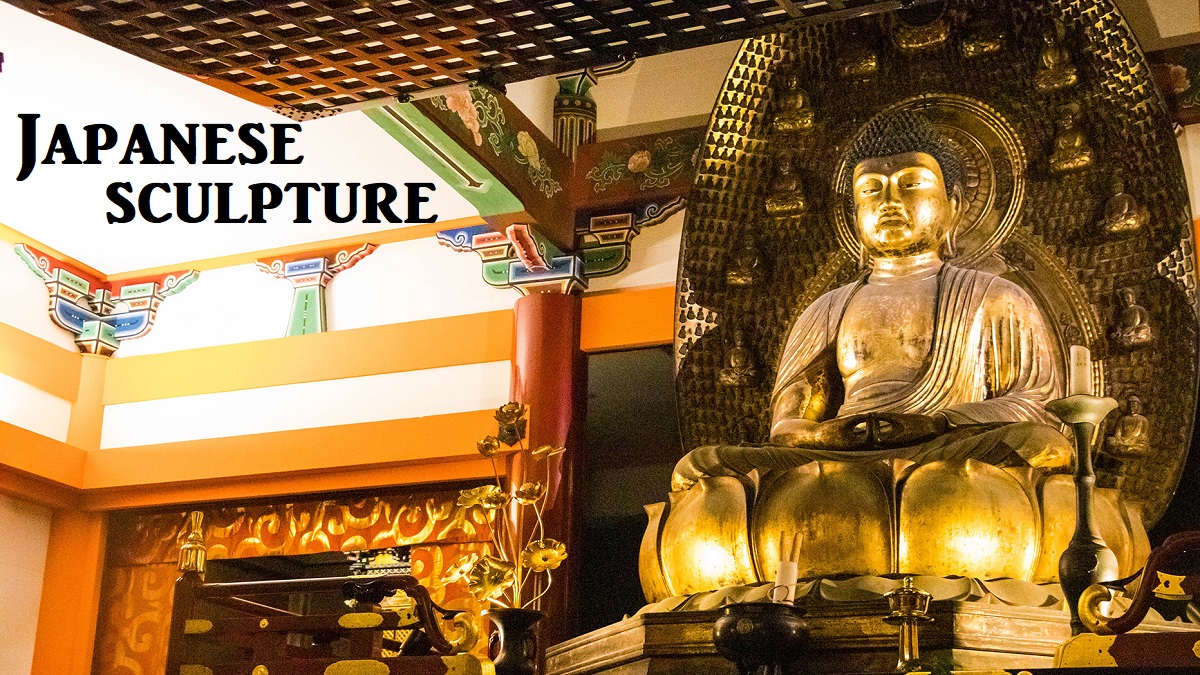Japanese sculpture
Since the late 19th century, many Japanese artists have created various sculptures as artwork.
But the previous sculptures were not artistic productions but objects of religious belief.
So we can see such works at not only museums but also Buddhist temples.
Buddha statue
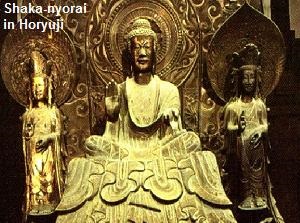
Buddha statue is the figure of Buddha who was the founder of Buddhism.
So one or some Buddha statues are laid out at the center of main building of a Buddhist temple.
Most statues were carved in wood.
They are usually covered with gold foil, but the color has become dark and dull over the years.
Kinds of Buddha statues
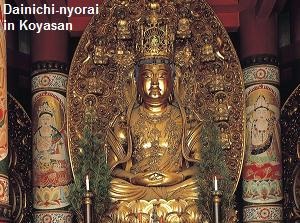
©Wakayama Prefecture / ©JNTO
Nyorai
Nyorai (如来) is an honorific of Buddha.
It means "the enlightened man".
The hair is like kinky perm, and both hands make any sign.
- Shaka Nyorai : The figure of Bhudda.
- Dainichi Nyorai : The Buddha of Tantric Buddhism.
- Amida Nyorai : The Buddha living western paradise of heaven.
- Yakushi Nyorai : The Buddha living eastern paradise of heaven.
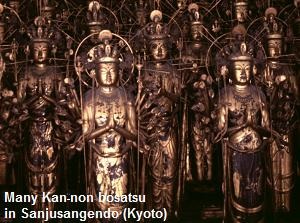
©JNTO
Bosatsu
Bosatsu (菩薩) means "the training man to achieve enlightenment".
It puts on a crown, wears some accessories and holds something on hand.
- Miroku Bosatsu : The training Buddha. He will appear in this world after 5.67 billion years.
- Monju Bosatsu : A supporter of Buddha.
He gives us intelligence and wisdom. - Fugen Bosatsu : A supporter of Buddha.
He gives us sense of charity, and helps ladies. - Seishi Bosatsu : A supporter of Buddha.
He gives us religious mind, and keeps us from going to hell. - Kan-non Bosatsu : A bosatsu helping all people. So it is very familiar to people.
Generally, it is said that this bosatsu is female. - Jizou Bosatsu : A bosatsu helping this world until Miroku Bosatsu will appear.
The figure is a monk.
Myouou
Myouou (明王) is a strong man who drives the Buddha's teaching by force, and is an incarnation of Buddha.
So it has a fierce look.
And he lives in the world of fire, so most statues of Myouou has flame at the back.
Tenbu
Tenbu (天部) is a generic name of Gods of Heaven.
We can find the Gods of "Taishaku-ten", "Benzai-ten" or "Kongo-rikishi" at any temple.
Nioo
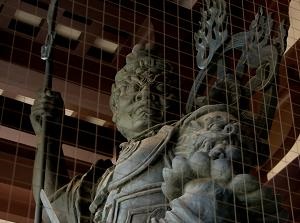
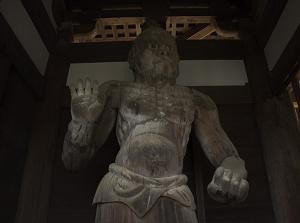
Nioo (仁王) is a pair of big statues of muscular giant, and is one of the Tenbu of Buddha statue.
It is also called "Kongo-rikishi".
It means "Wrestler which beats enemies against Buddha with weapon".
They mostly stand at both sides of the temple gate.
One has an angry look, and opens his mouth.
He is pronouncing "a".
"A" is the first sound of Sanskrit, so it means the beginning of space.
Another contains his anger, and closes his mouth.
He says "Hmm...". That's the last sound of Sanskrit, so it means the end of space.
They prevent a invation of enemies against Buddha.
Daibutsu
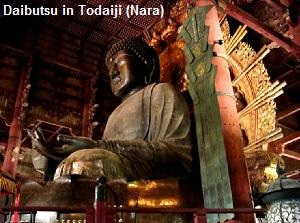
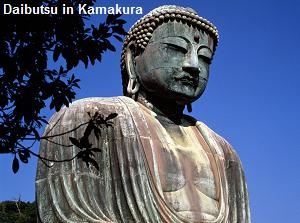
©JNTO
Daibutsu is a huge Buddha statue.
Many daibutsu are in Japan, but most of them are made since the 19th century.
It is too big to make, so there are few old daibutsu.
The famous historic daibutsu are the followings.
- Daibutsu in Nara : It is in Todai-ji temple in Nara city.
It was completed in 752.
This is similar to Nyorai statue, but is a statue of Buddha called Rushana-butsu which is written in Buddhist scriptures from central Asia.
It is made of bronze, and is about 15 meters high. - Daibutsu in Kamakura : It is in Kotoku-in temple in Kamakura city, and was completed in 1252.
This is an Amida-nyorai statue.
It is made of copper, and is about 11 meters high.
Jizou
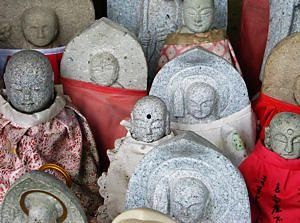
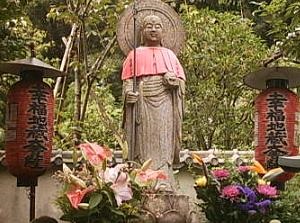
Jizou-bosatsu was a training bosatsu to achieve enlightenment.
But he gave up his post, and went on a walking tour to help the world as a monk.
So he mostly holds a walking stick.
He is traveling during 5.67 billion years until the Miroku-bosatsu will appear in this world.
So he is close to people's heart.
The statues are put not only in the temples but also at the side of the road.
We call them simply Jizou, or Ojizou-san as the polite word.
Most outdoor Jizou statues are made of stone.
Japanese people get their various hopes on each Jizou statue.
So most Jizou statues have a paticular purpose individually.
These are a scapegoat of sickness, accomplishment of birth, helping kids grow up in good health, protecting against evils and so on.

